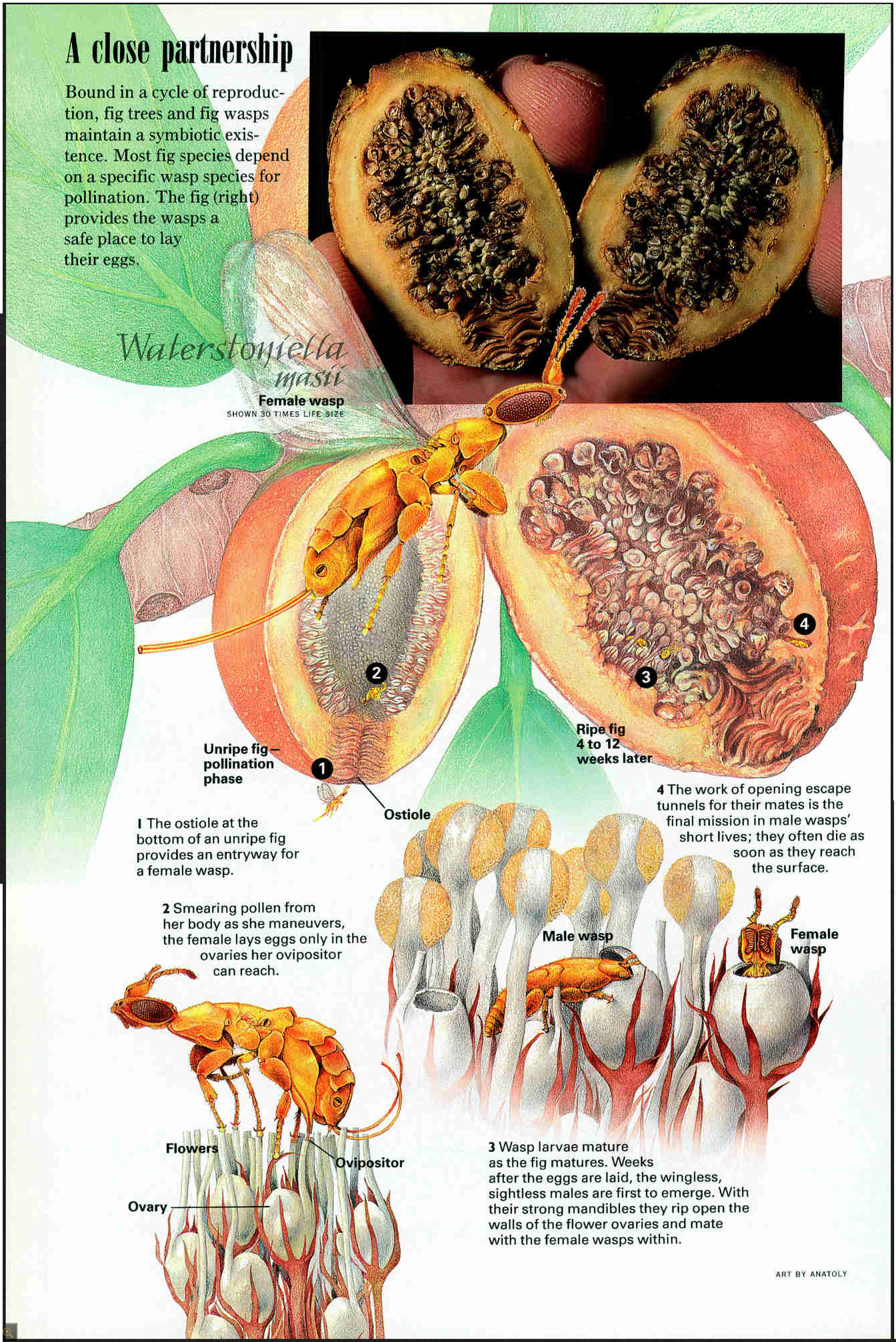Queen of Trees is now viewable on the official YouTube Channel of Victoria Stone and Mark Deeble.
Veteran wildlife filmmakers Victoria Stone and Mark Deeble once again put out a marvelous work by compiling observations on a community centered around a sycamore fig tree. The success of the documentary comes from their long-term observations in a particular filming spot in Kenya where they camped on location for more than two years. A thorough understanding of the landscape with it’s inhabitants helps predicting and capturing certain events that seem to be once in a life time shot. Of course in the meantime serendipity kicks in and one begins to notice finer details. It is almost impossible to choreograph events in wildlife films. Being there and ready to capture such serendipitous events is the key to success.
Figs and their highly specialized pollinators fig wasps are legendary. Oldest fig wasp fossil is 20 million years old. However, their symbiosis goes back to 60 million years in time. Thanks to this extraordinary relationship, figs today hold some of the largest gene flow distances. Using genetic markers it has been estimated that a single tropical fig tree can pollinate others within 630 square kilometers in a study carried out in Panama.
Wasp oviposition is a must see type of natural history event. Evolution of their ovipositors enabled them to specialize on specific prey type and as the documentary demonstrates wasps can even be parasites of other wasps. Site of oviposition is a limited resource and can lead to aggressive competitive behavior among females of the same species attracted to the same spot. The following illustration is from a 1997 National Geographic article covered by Tim Laman on the strangler figs of Borneo, summarizing the life cycle of fig wasps:
Plants also provide valuable nesting substrate. African and Asian hornbills show a functional equivalence to the toucans of the Americas. Both birds experience very similar ecological pressures such as limited number of suitable arboreal cavities. Like hornbills, toucans have also been observed to loose their nests to social insects like stingless sweatbees.
Herbivory is a threat for all plants. Squirrels feeding on flowers of a tree can make a comparable impact to that of giraffes feeding on unripe figs. Plants have evolved biological and chemical defenses to reduce damage from herbivores. Milky latex is a cocktail of chemicals that jams the digestive system of herbivores. This type of chemical defense is an example of evolutionary arms race between the prey and the predator. Instead of evolving biological resistance fig long-horn beetle and katydid have evolved evasive feeding behavior to get around figs chemical defense. Ants are great resource utilizers and can be very effective allies in defense against herbivores. However as we see in hildas tended by ants or in the sap-feeding cicadas this alliance can break down if ants can find a shortcut to utilize resources. Some flowers have evolved extrafloral nectaries to bribe ants and maintain their alliance.
The documentary provides snapshots of many plant-animal and animal-animal interactions. Some of the shots are quite serendipitous and adds to the story telling like the Mantid. Bees are known to collect resin for nest building and sanitation. Milky latex of the fig tree also serves a similar function for social and solitary bees. Tiger beetles are widespread both in temperate and tropical zones. In this documentary they prey on eating fruit flies coming to eat the decaying fruits. A great majority of seeds are also destroyed by predatory beetles or by elephants. Some animals however are excellent seed dispersers.
Plants don’t move but their genes do through pollen and seeds. Seed dispersal has a rich body of ecological research. One of the most influential organizing idea is the Janzen-Connell hypothesis. You can also see a nice compilation of seed dispersal from BBC Natural History Unit. This documentary not only shows how pollination of figs happen but also shows how their seeds are dispersed. For a plant dispersal of seeds away from the mother plant provides a survival advantage. Here as shown in this documentary after swallowing the seeds the catfish can swim up the river carrying the cargo in its belly unharmed. Fish can play a great role in colonization of linear habitats such as rivers. Seed dispersal by fish is called ichthyochory which is very common in flooded forests of the Amazon.
Finally, fig seeds are also dispersed by fruit eating bats. Bats expand seed shadow of fig trees quite effectively since they don’t chew the fruits and therefore germination rates can be very high. There’s one negative side though. Bats have an impressive spatial memory and tend to eat the fruits at their favorite spot. For this reason seeds may concentrate in particular locations increasing competition among them. Competition among the members of the same species is the toughest since everyone has identical needs which is one of the reasons why there are many species evolved to partition resources in many ways.



4 Comments
Thanks for providing us with such interesting material.